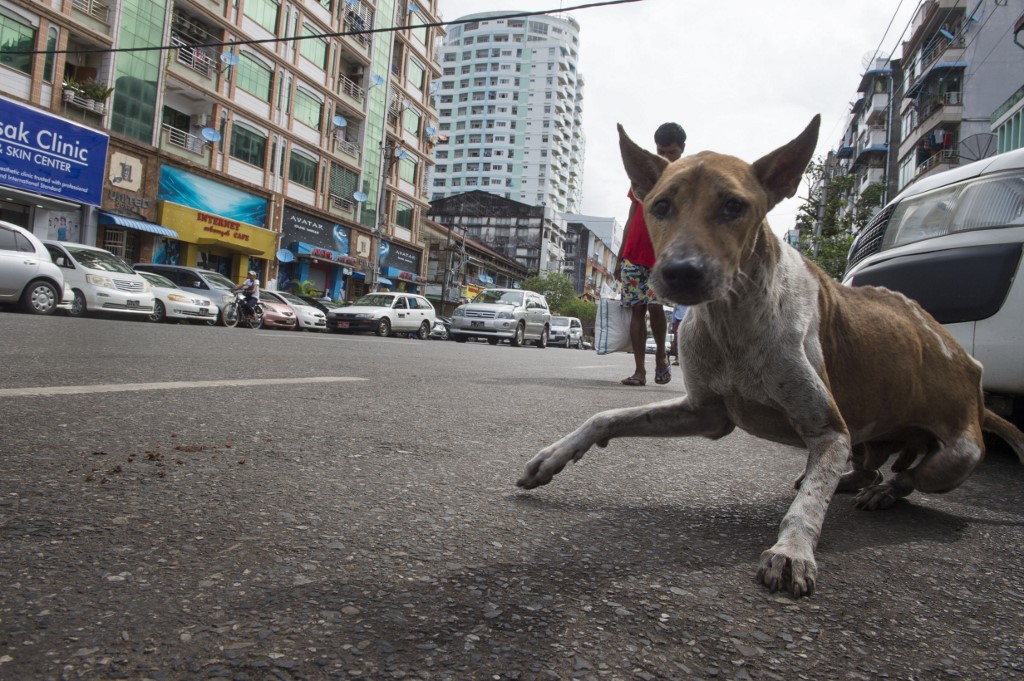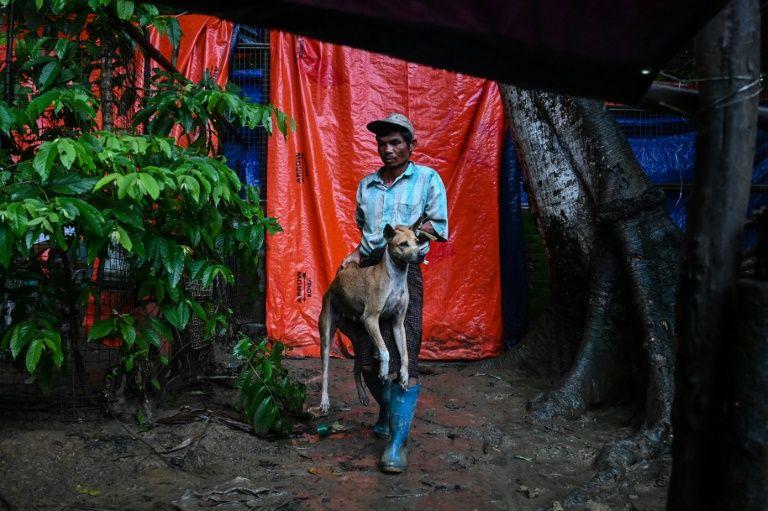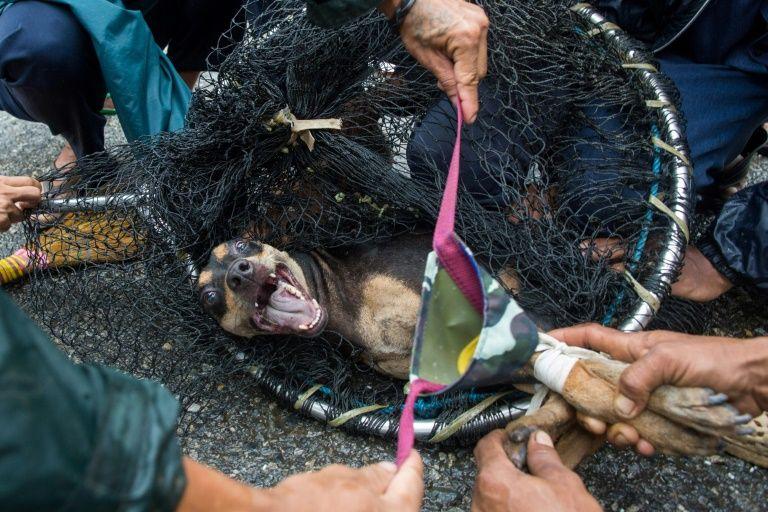
A market dog may be everyone’s friend, but a massive divide still exists over the issue of street dogs in Yangon.
One camp says poison them: they attack people, carry rabies; frighten women and children. We are better off without them.
The opposition says poisoning the animals is inhumane. Instead, the dogs should be castrated or spayed and vaccinated then returned to their streets, where neighbours will feed them and contribute towards any hospital treatment when things go wrong.
There is another way—a more involved way, but a direction which would perhaps lead to the ultimate doggies begotten of Yangon’s landrace.
The reality is street dogs in Yangon are rarely aggressive, a reason for our historical tolerance. Consider what mankind has done with animals who do pose a threat to human life, such as the Bengal tiger, Asiatic lion, and Asian elephant. Regardless, options like sterilization, adoption, and in some cases euthanasia are all useful tools to consider when managing dogs. Alone, none are the answer.
Studies show sterilization can be ineffective as a tool for behavior modification and can cause irreparable damage to the animal’s endocrine system. Still, to spay or neuter is considered the duty of anyone who lives with dogs.
Balance out the blanket sterilization and culling—let the locals take it dog by dog. If a dog injures anyone, vaccinate and sterilize them and then let residents decide whether the dog in question should be put down.
More likely though, one person will love the mutts—at least. In every township in the country the lazy mugs provide companionship and protection, acting the bane of rats as well as criminals looking for an easy target. They also brighten the day of thousands of people who wouldn’t have access to a dog otherwise.
Yes, our four (and sometimes three)-legged neighbours can be excitable and occasionally a nuisance, but this does not stop communities from feeding them leftovers, helping the injured, and weaning new litters.
People care and are doing the best with what they have. Let’s help keep these dogs around and manage them more effectively at the local level.
How can we do that? As mentioned, sometimes the dangerous ones must go. As for spaying and neutering, reserve it for dogs with problems we can live with.
It starts with dogs who make better neighbours—get them vaccinated and return them intact. Other dogs would be vaccinated, sterilized and returned as well, keeping litter sizes smaller and so not drastically altering the ecosystem.
A blanket sterilization solution works with deadly efficiency meaning the streets could be without doggies in ten to 15 years.
Treats, a cell phone, and a crate are the main tools needed to gather information and secure most dogs for transport to the clinic. Put treats in the crate, shut the crate, and head to the clinic for a checkup.
These amicable mongrels not only end up being someone’s best friend, they are also a resource for dog research. Most dog centred studies feature wild dogs or pet dogs while street dogs often get overlooked. In this information age, we have a canine surplus and the technology exists to monetize the data. There is probably already an app for it.
Who is responsible when something goes wrong? We all are. In neighboring India, it is one’s constitutional duty to care for the wellbeing of all animals. In Myanmar, looking after an animal is a meritorious characteristic of an auspicious life.
It’s a lovely custom to care for these adorable mangy beasts. Can adoption be communal? Yes. In the western shelter model, it’s known as fostering. Foster parents tend to animals who await a permanent home, but the cultural model in Myanmar is different.
Take, let’s say, “Scarface,” a middle-aged street dog who spent his nights cuddled up to taxi drivers next to a fire. For breakfast, he would merrily trot over to a house on the sunny side of his range. During the heat of the afternoon, grinning, he would rest on the cool concrete of a covered carport near some drinking water.
We split the bill. If Scarface needed medical attention, the first to notice would get it for him. He would never want for food or drink. Equally as important, there would always be someone to give him support and affection, until one day he makes the ultimate sacrifice while disposing of a cobra.
There are no simple answers, but we must adapt. Even if the purpose is to be the friendly neighborhood rat pack, dogs enrich our lives and have a place among us. A future without them would be bleak. Are the current methods we use on dogs humane enough to deal with concerns over human population? Probably not. So how humane are we willing to be to our faithful companions?



